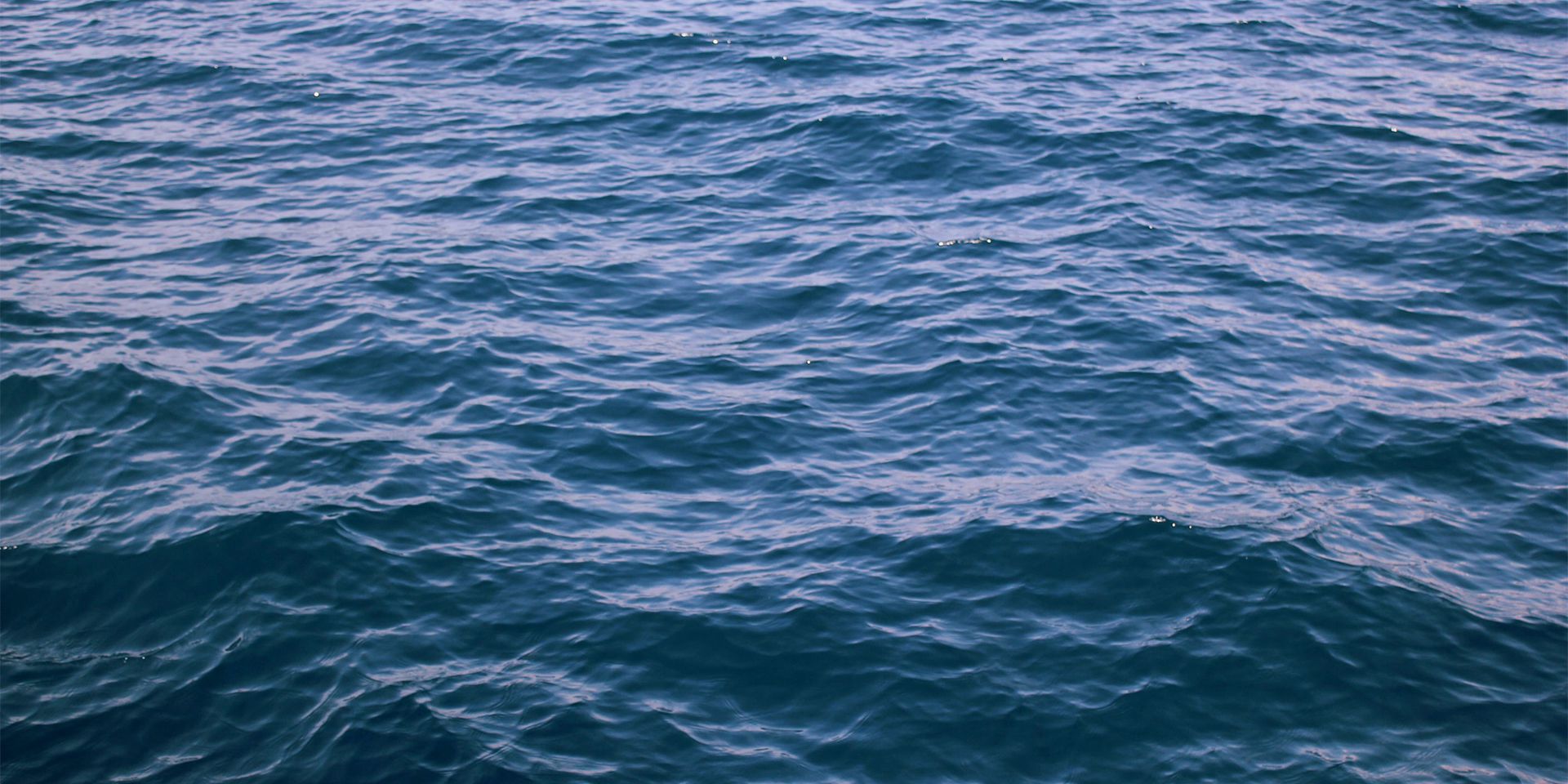Rare Pinniped Conservation Network (RAPCON)
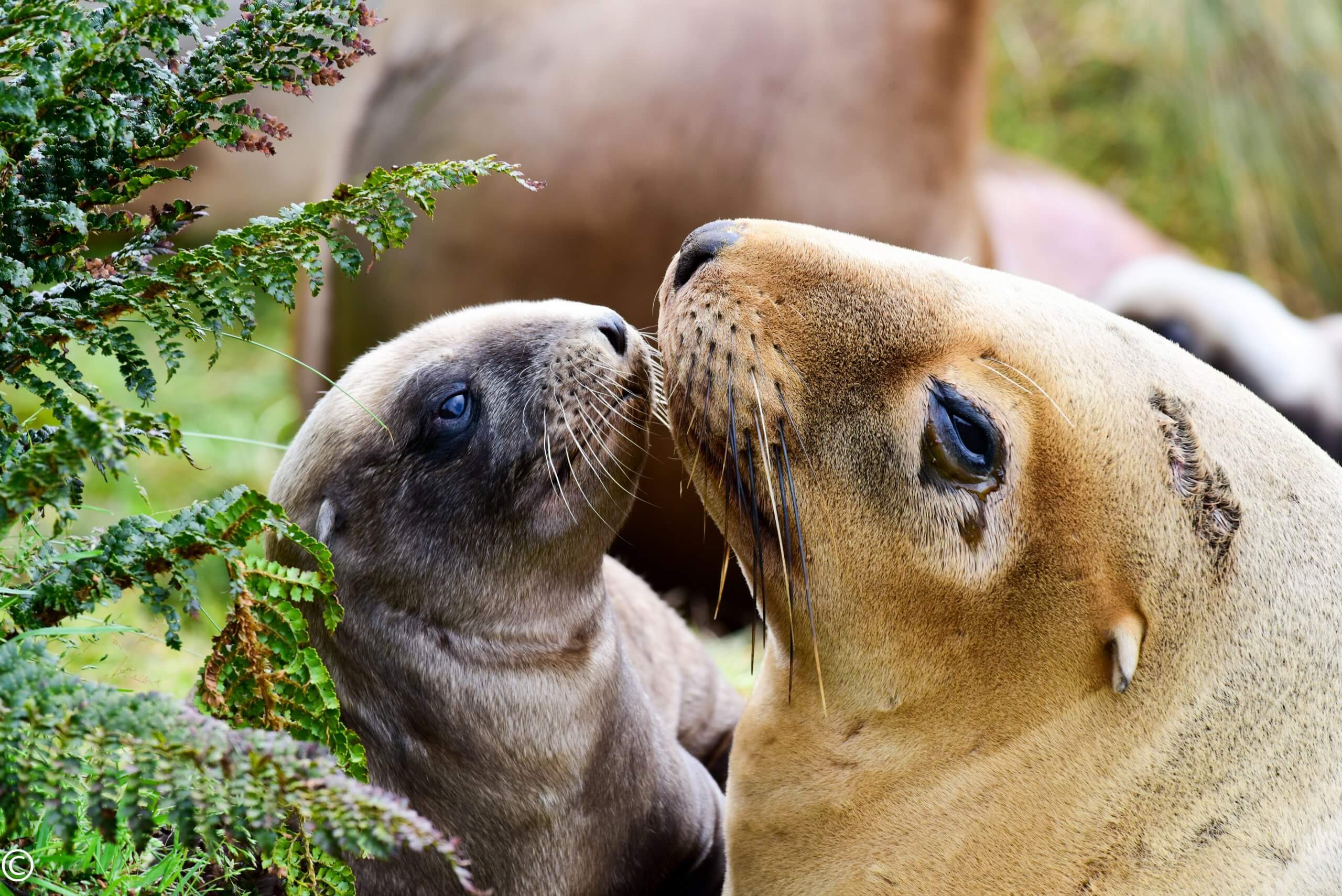
A New Zealand sea lion mother and pup on Campbell Island (Credit: Gareth Hopkins).
RAPCON is a network to foster organization and sustained collaboration among individuals working to conserve rare pinniped populations globally. The inaugural meeting of this network took place at the 2nd World Marine Mammal Science Conference in Barcelona (7th December 2019). A second meeting of the RAPCON was held in Hämeenlina, Finland during March 2023, hosted by the Saimaa Ringed Seal Research Team from the University of Eastern Finland. The Marine Mammal Commission has facilitated formation of RAPCON and is providing leadership and organizational support.
Background
The pinniped clade (a group of organisms with a common ancestor) comprises 33 species and numerous subspecies widely distributed in polar, sub-polar and temperate oceans, with some species occurring in tropical or subtropical regions. Although pinniped species were historically decimated by unsustainable killing, many species and populations have rebounded. Most pinniped species have population sizes exceeding 100,000 and some number in the millions (Figure 1). According to the IUCN Red List of Threatened Species, about two-thirds of pinniped species (and sub-species) enjoy LC (least concern) status, while about 10% are listed as VU (vulnerable). Approximately one-fifth of pinniped species and sub-species are considered EN (endangered). Two species, the Caribbean monk seal and the Japanese sea lion, were hunted to extinction.
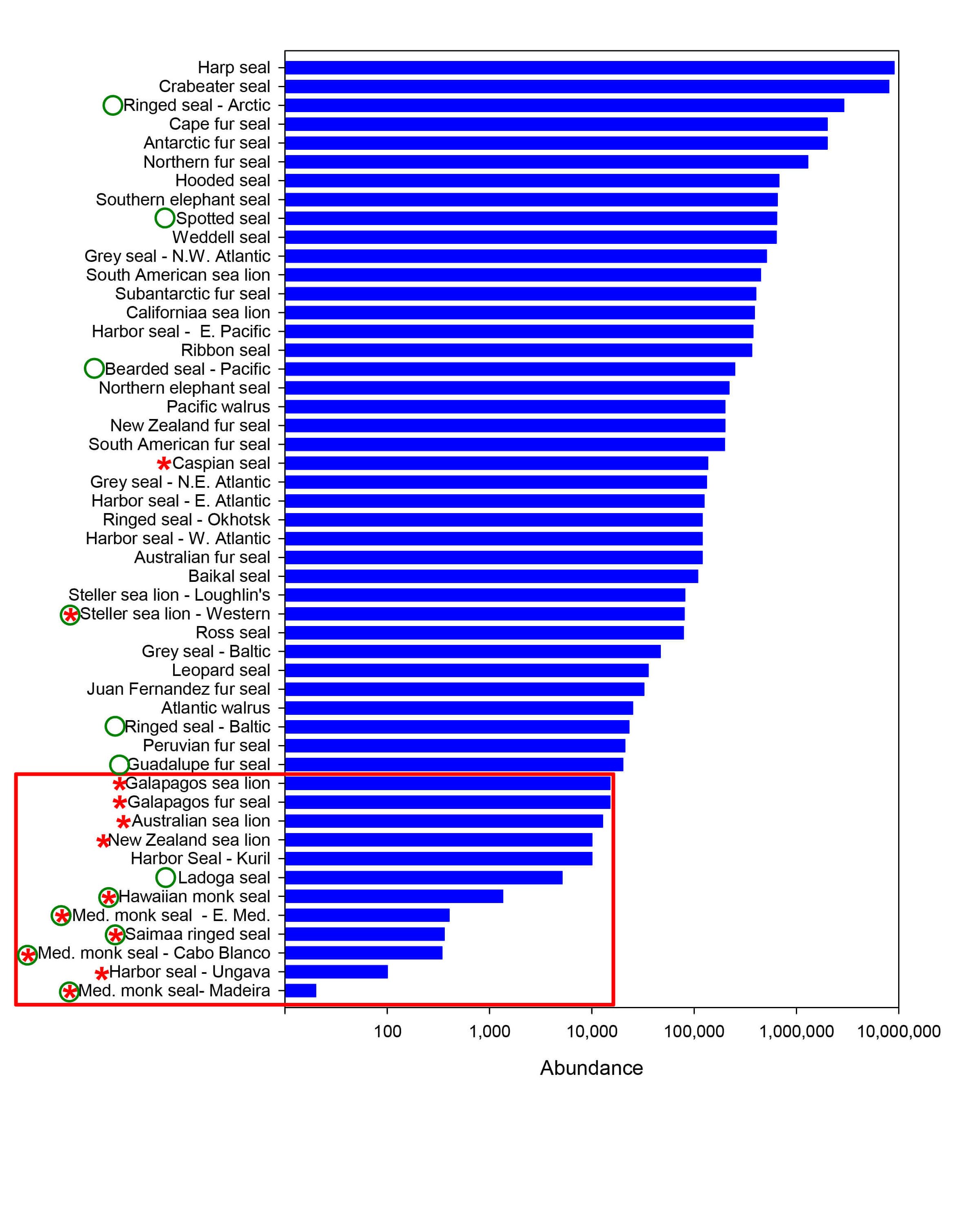
Figure. 1. Pinniped species, sub-species, and isolated populations ranked by abundance. Abundance is presented on a logarithmic scale to accommodate the six orders of magnitude range among these species and populations. Three populations of Mediterranean monk seal are presented separately as these represent entirely isolated demographic units. Red asterisks indicate IUCN endangered (EN) status and the red box contains populations of ~15,000 individuals or less (Source: IUCN Red List of Threatened Species). Green circles indicate species and populations listed in the U.S. under the Endangered Species Act.
RAPCON
This initiative currently focuses on the few pinnipeds ranked at the lower end of the abundance range (red box in Figure 1). These rare species, sub-species, and demographically isolated populations are at risk of extinction or reduction to irrevocably low population levels in the relatively near future, and share one or more of the following characteristics:
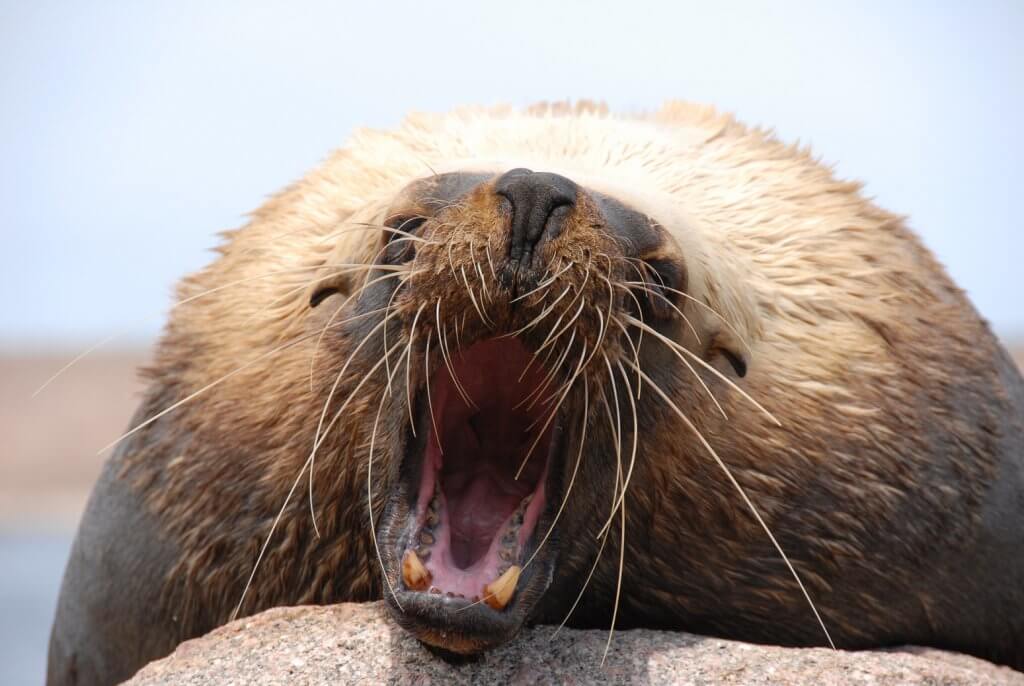
An endangered adult male Australian sea lion vocalizing (photo courtesy of Andrew Lowther, Norwegian Polar Institute).
- Relatively low abundance (< 15,000 individuals)
- Current or recently declining population trends
- Long-term failure to recover
- Small geographic range
- Subject to a suite of anthropogenic threats
Despite their relatively higher abundance, Caspian seals are a subject of interest to RAPCON because they are suffering unsustainable mortality due to bycatch in illegal, unmanaged and undocumented (IUU) fisheries.1
Many of these seal populations are the subject of recovery and research efforts executed by teams of extremely devoted conservationists. These programs have achieved a great deal for their respective subject species by employing clever and innovative research and conservation approaches. RAPCON hopes to boost the effectiveness of these individual programs through increased communication and collaboration.
Common Threats, Common Solutions
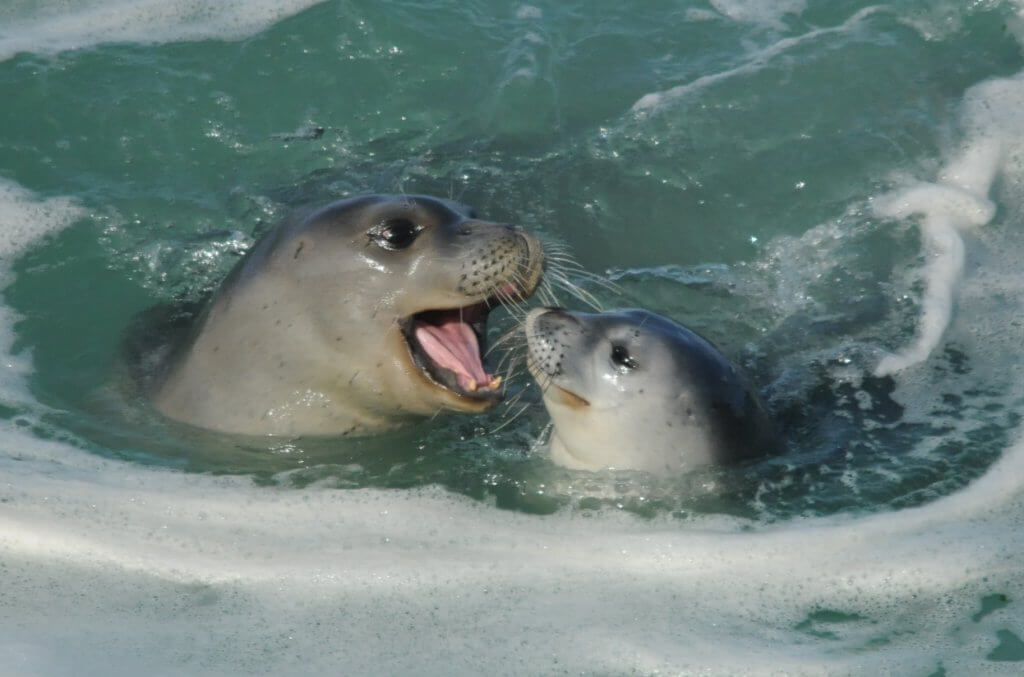
Mediterranean monk seal (Cabo Blanco, Mauritania) mother and pup swimming together. © M. Haya, CBD-Habitat.
Anthropogenic and natural threats can wreak profound, negative population-level impacts on small populations. The threats faced by rare pinnipeds are typically similar to those identified for more abundant species, but what may amount to marginal effects in the latter become existential in the former (Table 1). For example, while fishery bycatch is a common threat to both abundant and rare pinnipeds, entanglement and drowning in active fishing gear has severely reduced the Saimaa ringed seal population. A bacterial infection (Klebsiella pneumoniae) has episodically killed up to 50% of New Zealand sea lion pups born at one of the primary colonies. In 1997, a mass mortality event of unknown etiology reduced the Cabo Blanco population of monk seals by nearly two-thirds to just over 100 individuals. The Cabo Blanco population only recovered to pre-1997 levels after nearly two decades.
A rarely emphasized positive aspect of conserving small populations is that specific interventions can often mitigate threats and achieve positive population-level outcomes. Broad scale measures, such as establishing protected areas and fishery restrictions, have led to encouraging population growth in both Saimaa ringed seals and monk seals at Cabo Blanco. Increasing public awareness about endangered seals has likely also been instrumental in fostering seals’ coexistence with humans.
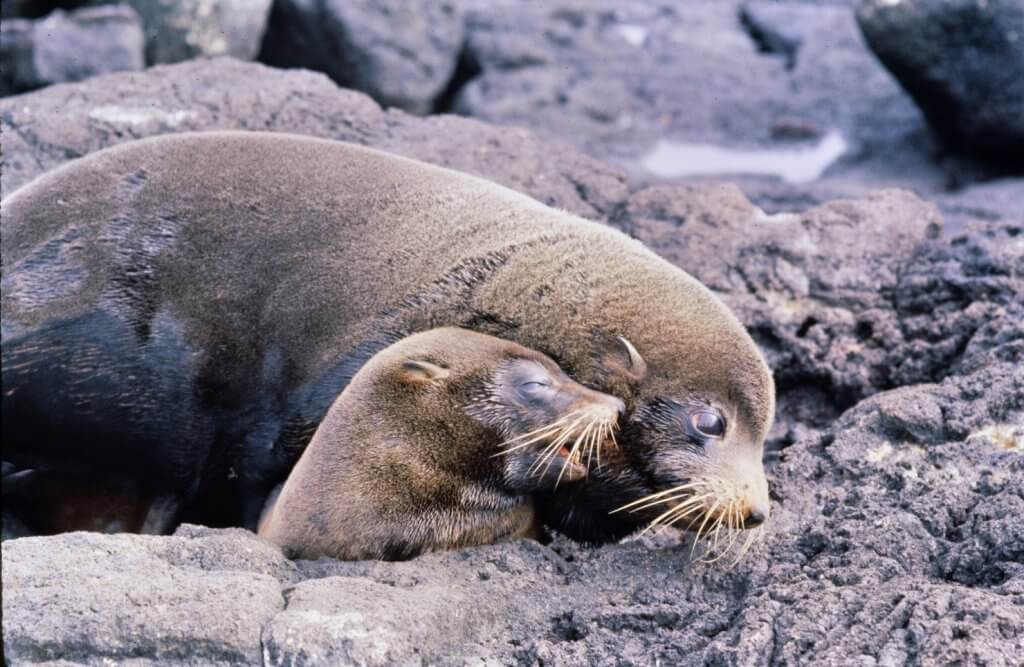
Galapagos fur seals (photo courtesy of Fritz Trillmich, Univ of Bielefeld).
A distinguishing characteristic of conservation opportunities in rare pinnipeds is the feasibility of achieving population-level benefits by intervening on a small (even individual seal) scale. This is well documented in Hawaiian monk seals ((Harting 2014) where up to 30% of the extant population has benefitted from interventions to save individuals, such as translocation, rehabilitation, de-hooking, dis-entanglement, treating infections, etc. At some New Zealand sea lion breeding sites, significant numbers of pups starve after they fall into mud holes from which they cannot escape. This source of mortality has been reduced by simply installing wooden ramps, which pups can use to readily climb out of holes. At Lake Saimaa, climate change is reducing the availability of snowdrifts, upon which ringed seals rely for subnivean lairs where they give birth and raise their pups. In low snow years, man-made drifts created by manually piling snow have become a critical resource for successful weaning of pups ((Auttila 2014). These ingenious small-scale interventions to mitigate threats are unusual in pinniped conservation, but may be critical for the persistence of small populations. Thus, the design, implementation, and rigorous evaluation of threat mitigation is a topic that could be advanced through greater connectivity among current and potential practitioners.
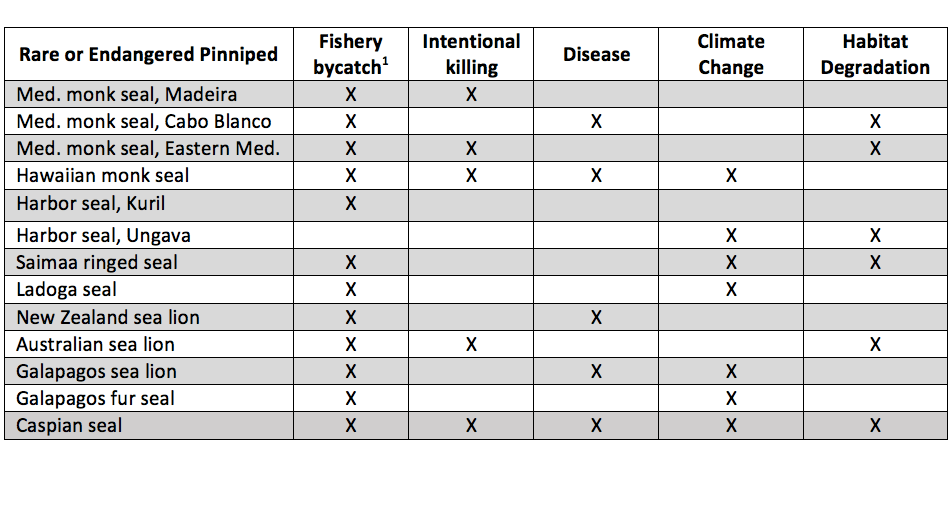
Table 1. Partial list of primary known, suspected, and anticipated threats to rare pinnipeds. Adapted from IUCN Red List of Threatened Species and more current information. Empty cells may reflect lack of information as much as absence of threats.
The Network
2024 Workshop:
The third meeting of the Rare Pinniped Conservation Network was held during the 25th Biennial Conference on the Biology of Marine Mammals in Perth, Western Australia on 10 November 2024. This one-day workshop showcased efforts to conserve Australian and New Zealand sea lions, although updates on other RAPCON species were also presented. Topics discussed included genetics, health and disease, and threats assessments. Please see the workshop agenda for more information.
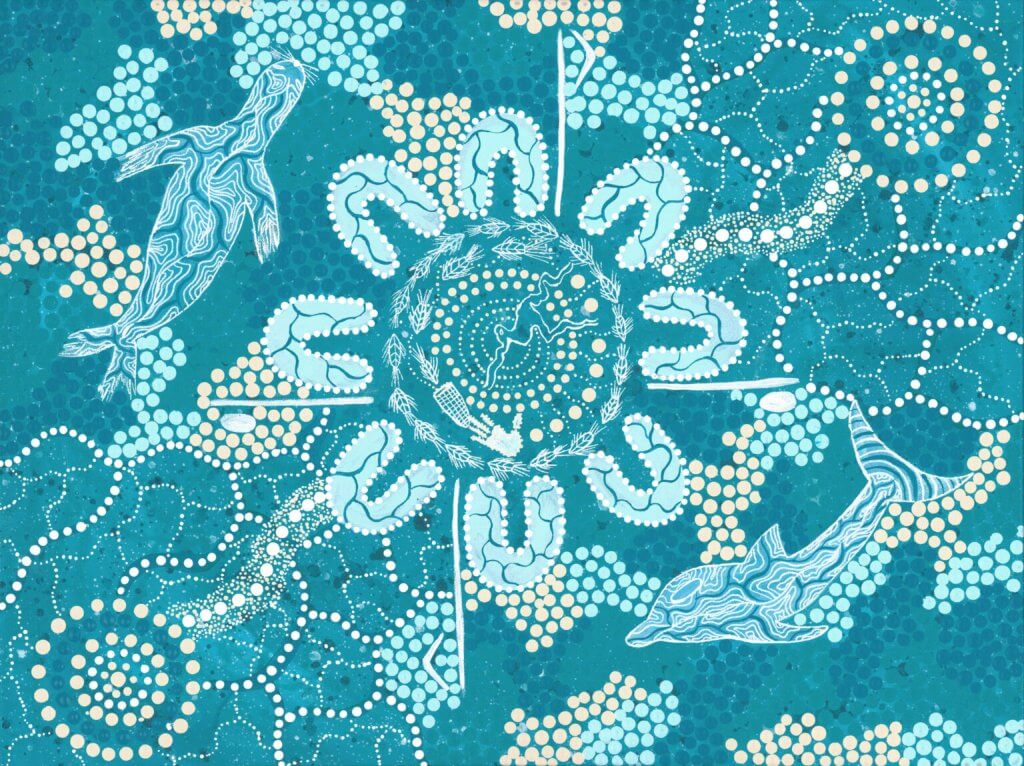
Conference art by Sarah Humphries
2023 Workshop:
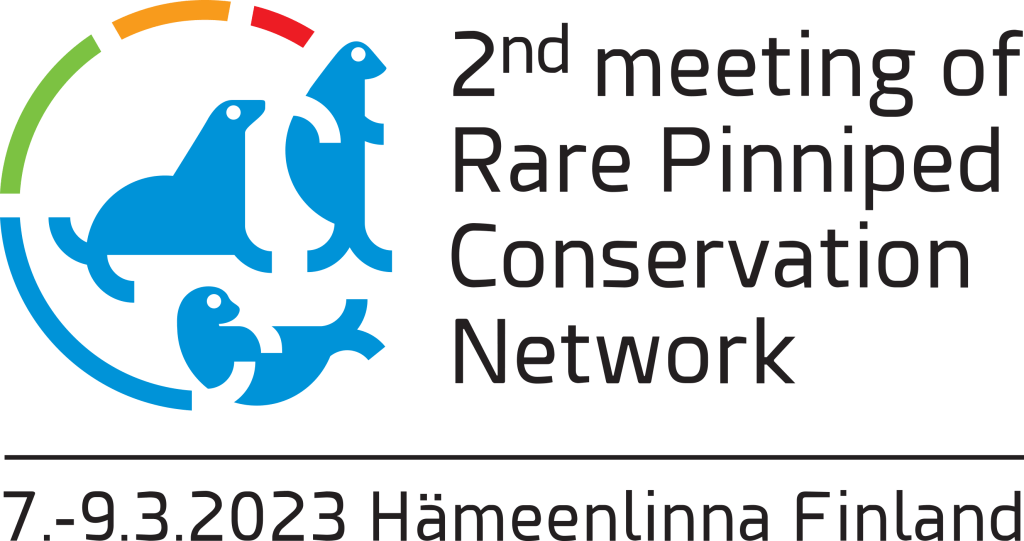
The second meeting of the Rare Pinniped Conservation Network (RAPCON) was held in Hämeenlina, Finland during 7-9 March 2023. This was the first opportunity for the RAPCON community to meet since the Commission-sponsored inaugural workshop in Barcelona in 2019. The Finland meeting was part of the “Our Saimaa Seal LIFE-project” funded by European Union and was hosted by the Saimaa Ringed Seal Research Team from the University of Eastern Finland. More than 50 attendees from at least 10 countries shared updates on their respective subject species. Plenaries and special sessions focused on climate change risks, health assessment, genetics, and novel monitoring and conservation tools. The second RAPCON meeting was a great success in terms of sharing knowledge of both tried-and-true, and cutting edge, research and management techniques for rare seal, sea lion, and fur seal species around the globe. The meeting broadened participation in RAPCON and strengthened connections among all network members.
2019 Workshop:
An inaugural meeting of the Rare Pinniped Conservation Network was held at The 2nd World Marine Mammal Science Conference in Barcelona. Forty-eight people from 13 countries attended the workshop, representing expertise in ten different rare pinniped species. This one-day workshop included presentations in the morning to highlight some of the populations’ status, threats, associated projects, and conservation efforts. The afternoon session included three topical demonstrations on Photo-ID systems, rehabilitation and health studies, and telemetry field and analysis methods. The workshop provided an initial forum for pinniped conservationists and other interested people to connect.
Beyond the Workshops
Participation in the network is entirely voluntary and will often be on a peer-to-peer basis, with the Commission providing leadership, organizational and administrative support. RAPCON experts are pursuing several ongoing collaborations to conserve Saimaa, Ladoga and Baltic ringed seals, Mediterranean monk seals in several countries, and Hawaiian monk seals. For more information about how to engage with the network please email bodonnell@mmc.gov using RAPCON in the subject line.
What the Commission is Doing
In addition to supporting broader RAPCON networking and activities the Commission recently supported three projects relevant to the goals of RAPCON: 1) a project focused on developing solutions to the critical threat of bycatch in illegal fisheries for Caspian seals, 2) a project focused on evaluation of the effectiveness of protected areas for Mediterranean monk seal juveniles protection, 3) a project focused on Initiation of a long-term Guadalupe fur seal population monitoring program.
1 The Commission is currently supporting a project focused on developing solutions to the critical threat of bycatch in illegal fisheries for Caspian seals.
2 Including entanglement in derelict fishing gear.
